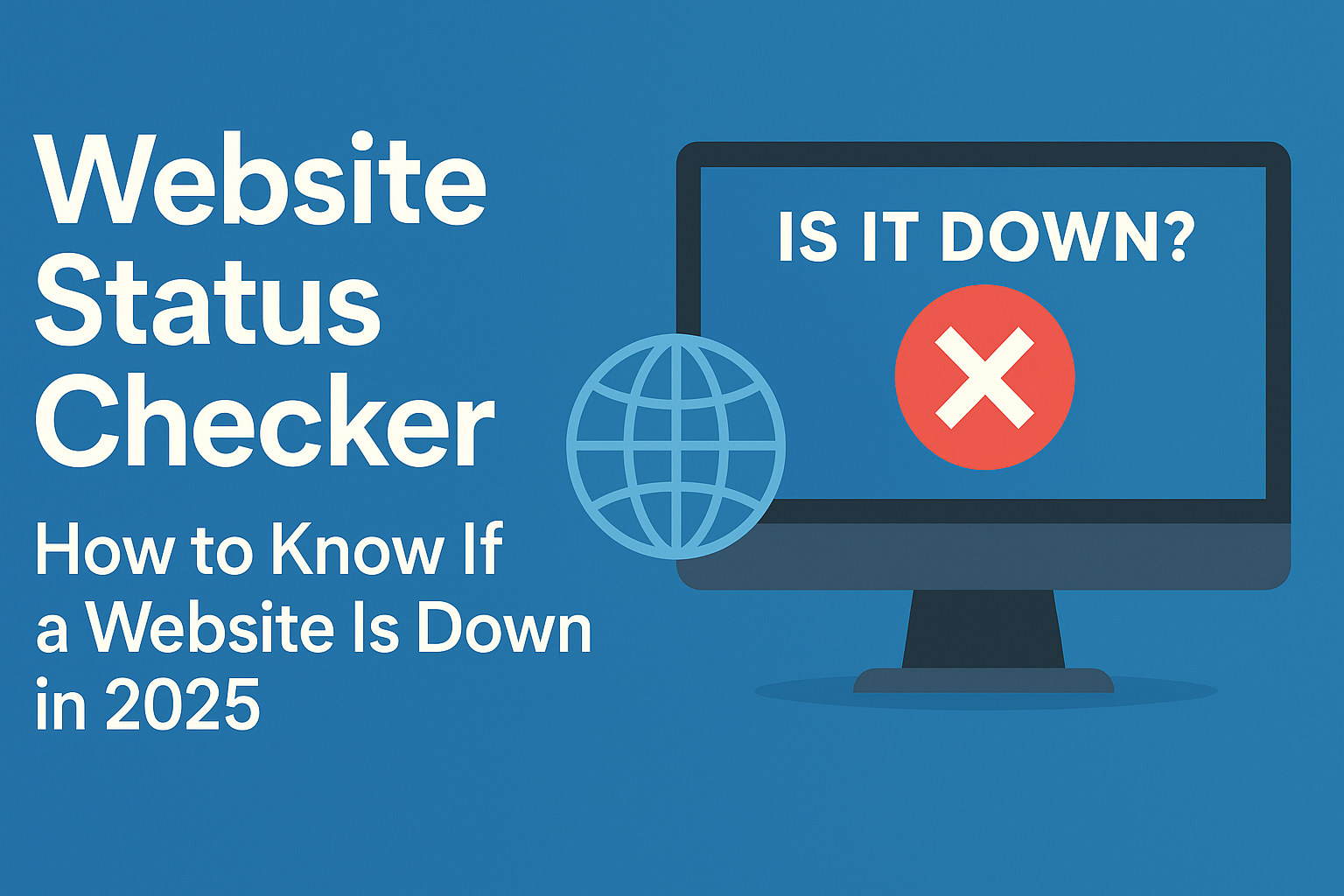
25
Website Status Checker: How to Know If a Website Is Down in 2025
Check if a website is down with the Recipeace Website Status Checker. Learn how site downtime happens, how to troubleshoot errors, and why uptime monitoring matters in 2025.
Introduction: Why Website Uptime Matters
Have you ever visited a website and wondered, “Is this site down just for me, or for everyone?”
In 2025, website uptime is more critical than ever. Businesses, eCommerce stores, and blogs lose thousands of dollars for every minute of downtime. That’s why tools like the Recipeace Website Status Checker are essential for users and site owners alike.
This guide explains how website status checkers work, why they’re important, and how to troubleshoot downtime effectively.
What Is a Website Status Checker?
A website status checker is a tool that tells you whether a website is:
- Online and working
- Offline or unreachable
- Experiencing partial issues (slow loading, broken pages)
It checks the site from multiple servers worldwide to confirm if the issue is local or global.
Why Do Websites Go Down?
- Server Issues – Hosting problems or crashes.
- DNS Problems – Misconfigured DNS records.
- Expired SSL Certificates – Block browsers from loading the site.
- Traffic Overload – Sudden spikes cause servers to fail.
- Cyberattacks – DDoS and hacking attempts.
- Expired Domain Names – Forgotten renewals take sites offline.
Why Use a Website Status Checker?
- Quick Verification – Instantly know if a site is down.
- Global Testing – See if the issue is regional or worldwide.
- Troubleshooting Tool – Helps webmasters find the cause.
- Transparency – Proves downtime to hosting providers.
How to Use the Recipeace Website Status Checker
- Enter the website URL.
- Run the test.
- Instantly see if the site is online, offline, or slow.
- Check additional details like response time and HTTP status codes.
What Information Does It Provide?
- HTTP Response Codes (200, 404, 500, etc.)
- Ping & Latency
- Server Location & Status
- SSL/HTTPS Status
Common Website Status Codes Explained
- 200 OK – Site is online and working.
- 301/302 Redirects – Page redirects elsewhere.
- 404 Not Found – Page doesn’t exist.
- 500 Internal Server Error – Server-side issue.
- 503 Service Unavailable – Server overloaded or under maintenance.
Real-World Example: Downtime Costs
- Amazon once lost an estimated $100,000 per minute during downtime.
- Even small businesses can lose $500–$2,000 per hour if their site goes offline.
How to Fix a Website That’s Down
- Check Hosting Provider: Contact support.
- Check DNS Records: Use a DNS lookup tool.
- Verify SSL Certificate: Ensure it hasn’t expired.
- Monitor Traffic: Mitigate sudden surges.
- Update Security: Protect against DDoS.
Proactive Website Monitoring
Instead of waiting for issues, businesses should:
- Set up automated uptime monitoring.
- Get instant email/SMS alerts when downtime occurs.
- Regularly run status checks to catch problems early.
Future of Website Uptime Checking (2025 and Beyond)
- AI-powered monitoring predicts downtime before it happens.
- Edge computing reduces latency worldwide.
- Self-healing servers automatically reroute traffic.
Conclusion: Always Stay Online
Downtime hurts SEO, revenue, and reputation. That’s why regular checks are essential.
Use the Recipeace Website Status Checker to:
Verify if a site is online or offline
Troubleshoot downtime instantly
Monitor uptime for better performance
Contact
Missing something?
Feel free to request missing tools or give some feedback using our contact form.
Contact Us